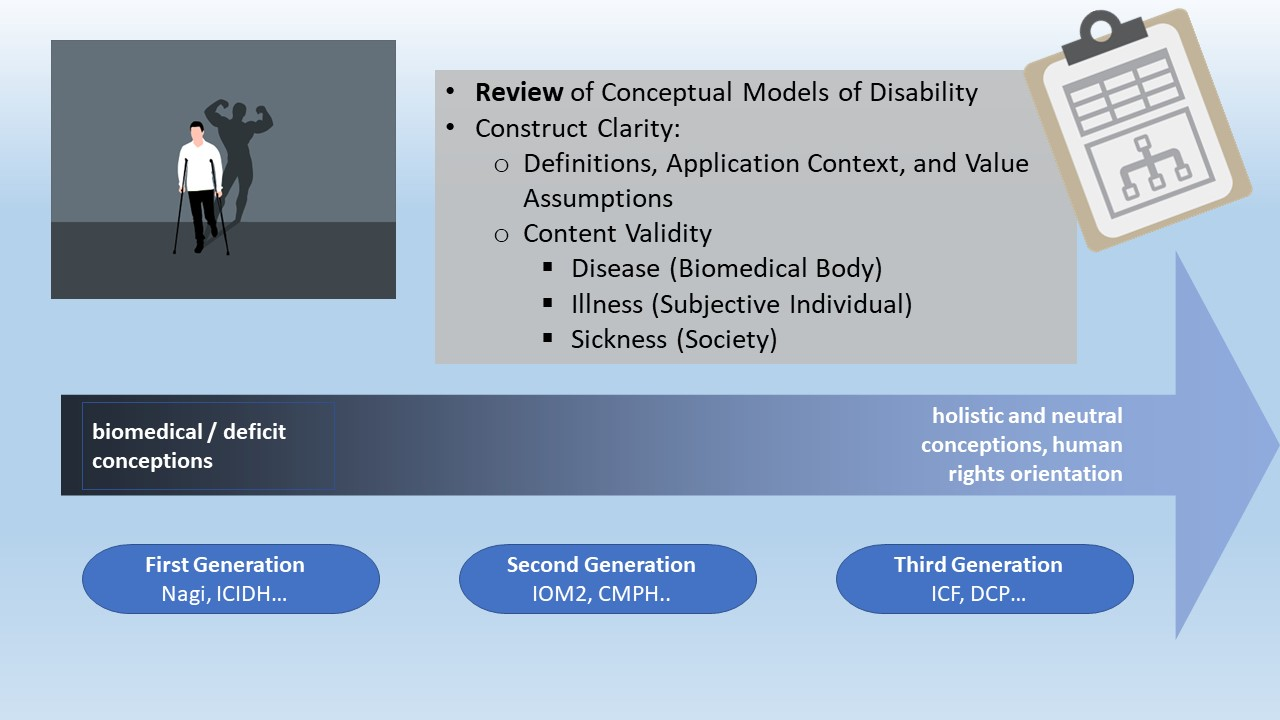von Matthias Forstner in Disabilities 2 (3). Frei zugänglich:
https://www.mdpi.com/2673-7272/2/3/39
Im Artikel vergleiche und bewerte ich 12 konzeptuelle Modelle von Behinderung aus drei Generationen, vom Nagi Modell aus den 1960ern bis zur Internationale Klassifikation der Funktionsfähigkeit, Behinderung und Gesundheit (ICF) und dem Disability Creation Process. Ich zeige auf, wie progressive Vorstellungen rund um Behinderungen langsam dafür sorgen, dass auch nicht biomedizinische, d.h. indviduellenund soziale, Aspekte immer mehr berücksichtigt werden. Zudem gehe ich darauf ein, was es meiner Meinung nach noch zu tun gebe, um ein holitisches konzeptionelles Modell von Behinderung zu erstellen.
Abstract
In 1965, Saad Z. Nagi published a very influential conceptual model of disablement in which he distinguished among several aspects of the disability phenomenon. In the following decades, several other conceptual models were proposed, increasingly taking up ideas and demands emerging from the disability movement, especially the social model of disability. In this review, three generations of these conceptual models of disability are presented, contrasted, and evaluated, especially in regard to the thematization of non-biomedical aspects. The elaboration ensues with the help of the criterion of construct clarity and thus focuses on the model’s definitions of components, application context, value assumptions, and content validity. For the latter aspects, the health sociological triad of disease/illness/sickness is employed. These concepts are adapted to the disability phenomenon. While the first generation focuses on a mainly biomedical disablement process, only later supplemented with other context factors, the second generation attempts to combine this assortment with a relational understanding of disability and also increasingly departs from conceptualizing the components negatively. Finally, the third generation of conceptual models is more holistic, and gives more weight to environmental aspects, but still somewhat neglects the individual aspects.
